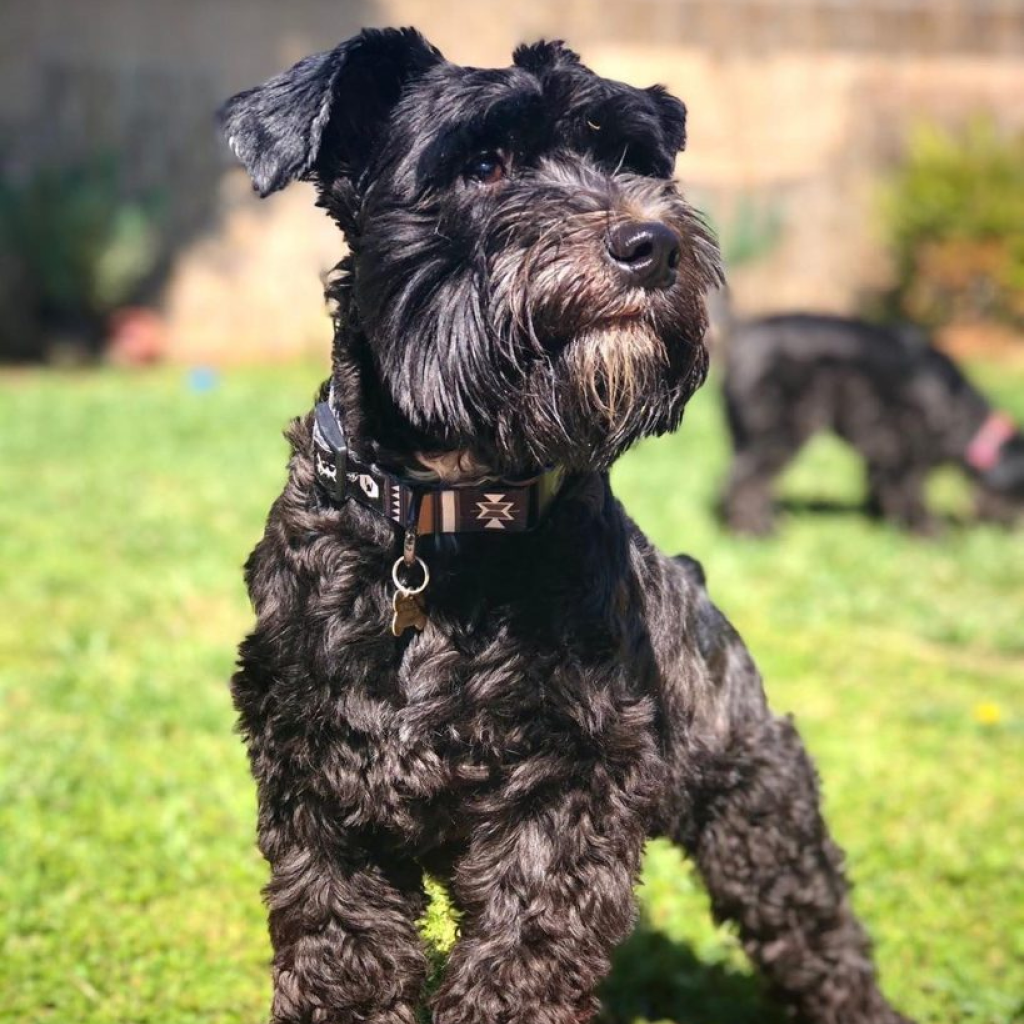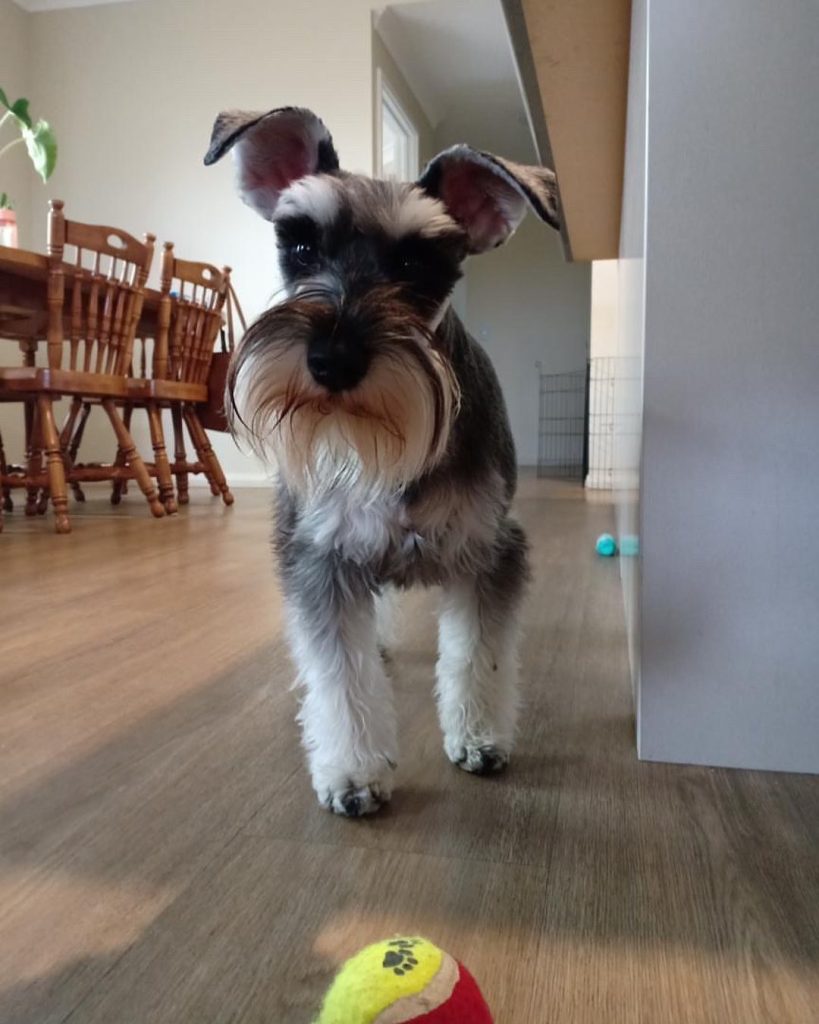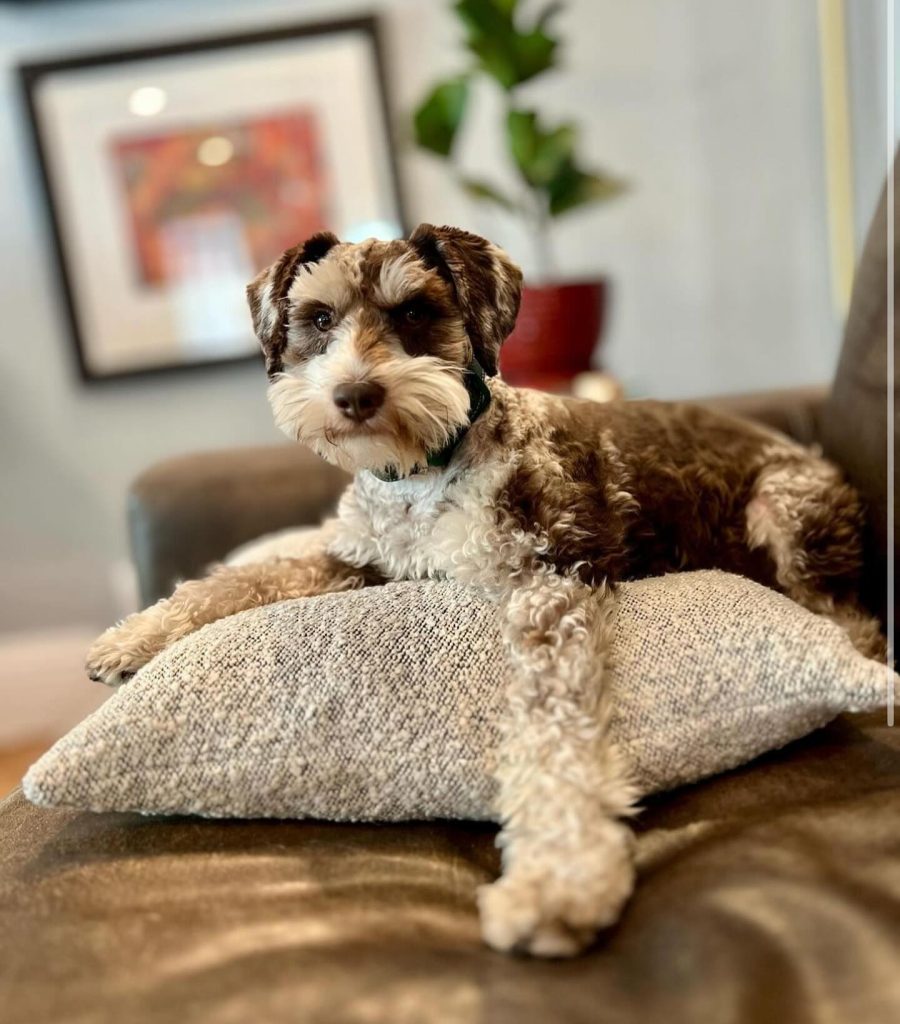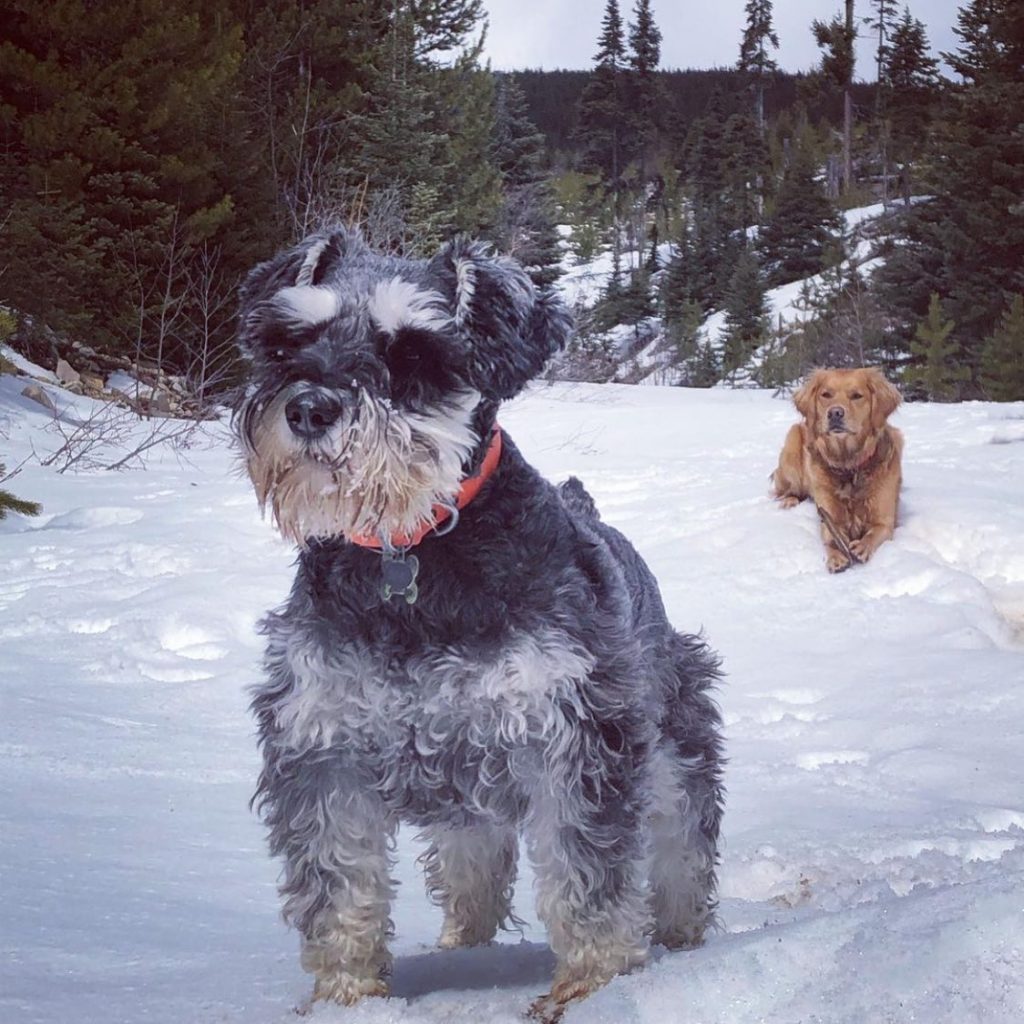Training a Schnauzer, whether a Standard, Giant, or Miniature, is an enriching and rewarding experience for the dog and the owner. Known for their intelligence, versatility, and spirited personality, Schnauzers thrive when they’re mentally stimulated and engaged through training. Practical training molds their behavior and strengthens the bond between you and your furry friend. This comprehensive guide will take you through various aspects of training your Schnauzer, ensuring you’re well-equipped to cater to their unique needs and characteristics.

Key Training Milestones for Miniature Schnauzer
Training a Schnauzer is a journey that evolves as your dog grows. Recognizing and understanding the critical milestones in this journey is crucial for practical training. These milestones are not just age-specific but are also tied to the developmental stages of your Schnauzer. From the early weeks of puppyhood to the more advanced stages of their life, each phase brings different training opportunities and challenges. Let’s delve into these milestones to help you tailor your training approach according to your Schnauzer’s age and learning capacity.
Early Development: 8 to 16 Weeks
During the early development stage of a Schnauzer puppy, the focus should be on socialization and basic commands. This is a crucial period when Schnauzer is most receptive to new experiences. Introducing them to different people, animals, environments, and sounds is essential for their social development. Basic commands like ‘sit,’ ‘stay,’ ‘come,’ and ‘no’ should be introduced. It’s also the perfect time to start house training and crate training.
Progressing Skills: Up to 6 Months
As your Schnauzer progresses to six months, training should become more structured. Continue reinforcing basic commands and introduce more complex ones like ‘heel,’ ‘leave it,’ and ‘lie down.’ This is also an excellent time to start leash training. Your Schnauzer’s attention span and ability to follow commands will improve, allowing for more effective training sessions. Regular, short training sessions are vital to keeping them engaged and learning.
Advanced Training: Beyond One Year
Once your Schnauzer crosses the one-year mark, they should have a good grasp of primary and intermediate commands. Now, you can focus on advanced training techniques. This can include off-leash training, advanced obedience, agility training, and even specific tasks like therapy or service dog training, depending on your Schnauzer’s temperament and abilities. This stage is about refining skills and challenging your Schnauzer to keep them mentally stimulated and engaged.
Essential Techniques for Schnauzer Training
Training a Schnauzer requires patience, consistency, and understanding of their unique traits. Schnauzers are intelligent and often strong-willed, making them responsive to training and likely to test boundaries. The key to successful Schnauzer training is adopting techniques catering to their temperament and learning style. Let’s explore some essential techniques to help you effectively train your Schnauzer.
Consistency is Key
Consistency is crucial in any dog training, but especially so for Schnauzers. They respond best to a routine where commands, rewards, and consequences are predictable and consistent. This consistency helps reinforce learned behaviors and establishes a clear understanding of expectations between you and your dog.
Positive Reinforcement
Schnauzers respond well to positive reinforcement. This involves rewarding desired behaviors with treats, praise, or playtime and encouraging them to repeat them. Rewarding your Schnauzer immediately after they display a desired behavior is essential to create a strong association between the behavior and the reward.
Short and Engaging Training Sessions
Schnauzers have a moderate attention span and can become bored with repetitive or lengthy training sessions. Keep training sessions short, around 10 to 15 minutes, and focus on making them engaging and fun. This approach will help maintain their interest and enthusiasm for learning.

Socialization
Socialization is a critical training component, especially in the early stages of your Schnauzer’s life. Expose them to various environments, people, and other animals. This exposure helps develop a well-adjusted, comfortable, and confident dog in different situations.
Training for Different Schnauzer Sizes
It’s important to remember that training techniques might vary slightly depending on whether you have a Miniature, Standard, or Giant Schnauzer. The basic principles remain the same, but the intensity and duration of the training sessions might need to be adjusted according to their size and energy levels.
Incorporating these techniques into your training regimen can create a strong foundation for your Schnauzer’s behavior and obedience. Remember, training is not just about commands and rules; it’s also about building a bond and understanding between you and your dog.
The Start Young Method
The Start Young Method is a practical approach for training Schnauzer puppies, emphasizing the importance of beginning their training journey early. This method is based on the understanding that puppies can learn quickly and form lasting habits with their developing minds and adaptable nature. The critical elements of this approach include early socialization, basic obedience training, house training, and crate training.
Socialization during puppyhood is crucial. Exposing your Schnauzer to different people, animals, environments, and sounds helps shape a confident and well-behaved adult dog. Early obedience training should focus on simple commands like ‘sit,’ ‘stay,’ and ‘come,’ using positive reinforcement to encourage good behavior.
House training is another vital aspect of the Start Young Method. Establishing a consistent routine for bathroom breaks and meals aids in this process. Crate training also plays a vital role, offering your puppy a safe and comfortable space while assisting in house training and preventing destructive behaviors.
By starting training early and focusing on these fundamental areas, the Start Young Method sets the stage for a well-trained Schnauzer, making future training endeavors smoother and more effective.
Leadership Training Method
The Leadership Training Method in Schnauzer training revolves around establishing yourself as a clear and consistent leader for your dog. This approach is efficient with Schnauzers, a breed known for intelligence and independence. You can foster a respectful and cooperative relationship with your Schnauzer by positioning yourself as the pack leader.
In this method, it’s crucial to set boundaries and rules consistently. This includes controlling resources like food, toys, and access to play areas, reinforcing your leadership position. Training sessions should be conducted with a calm and assertive demeanor, showing your Schnauzer that you are in charge but also fair and trustworthy.
Consistent routines and structured training sessions are critical components of this method. Being smart and sometimes stubborn, Schnauzers respond well to a structured environment where they understand what is expected of them. Regular training sessions and clear and consistent commands help reinforce your leadership and provide your Schnauzer with the necessary guidance.
The Leadership Training Method is not about being overly strict or dominant but providing consistent guidance and clear communication. This approach builds a strong bond based on mutual respect and understanding, leading to a well-behaved and well-adjusted Schnauzer.
Addressing Bad Dog Behavior Effectively
Effectively addressing lousy behavior in Schnauzers is crucial for a harmonious relationship. Schnauzers are intelligent and sometimes headstrong, leading to undesirable behaviors if not appropriately managed. Here are key strategies for addressing bad behavior:
- Immediate Correction: Address lousy behavior as soon as it occurs. Delayed reactions can confuse your Schnauzer, making it harder for them to associate the correction with the action.
- Consistency: Be consistent in your responses to bad behavior. Inconsistent reactions can send mixed signals, making it difficult for your Schnauzer to learn what is acceptable.
- Positive Reinforcement: Redirect bad behavior by encouraging and rewarding good behavior. This teaches your Schnauzer what behaviors are desirable.
- Avoid Physical Punishment: Physical punishment can lead to fear and aggression. Opt for positive training techniques instead.
- Understand the Cause: Sometimes bad behavior responds to an underlying issue, like anxiety or boredom. Understanding the root cause can help in addressing the behavior more effectively.
- Professional Help: Consult a dog trainer or behaviorist for tailored advice and strategies if bad behavior persists.
Training Foundations For Obedience for Miniature Schnauzers
Training foundations for Miniature Schnauzers involve specific strategies tailored to their size, temperament, and energy level. Miniature Schnauzers, intelligent and often spirited, require a balanced approach of firmness and playfulness in training. It’s essential to start with basic obedience training, focusing on commands like ‘sit,’ ‘stay,’ and ‘come.’ Consistent, short, and engaging training sessions are practical, considering their attention span and energy. Positive reinforcement works well, using treats and praise to encourage desired behaviors. Early socialization is crucial to ensure they are well-adjusted and comfortable in various environments and situations. Establishing these foundational training elements early helps raise a well-behaved and happy Miniature Schnauzer.
Importance of Positive Reinforcement
Positive reinforcement is a crucial aspect of training Schnauzers. This method involves rewarding desirable behavior and encouraging the dog to repeat it. Schnauzers, known for their intelligence and independence, respond well to this approach as it aligns with their learning style. The key to positive reinforcement is timing and consistency. Immediate rewards following good behavior make it clear to the dog what action is being rewarded. Use treats, praise, or play as rewards. This method reinforces good behavior and strengthens the bond between you and your Schnauzer, creating a positive and enjoyable training experience.
Utilizing Happy and Encouraging Tones

Using happy and encouraging tones in your voice effectively communicates with your Schnauzer during training. Schnauzers are sensitive to their owner’s tone of voice, and a positive tone can significantly enhance their learning process. Here are key points to remember:
- Consistent Tone: Use a consistent, upbeat tone when giving commands or praises.
- Clarity and Simplicity: Keep your commands clear and straightforward, ensuring your Schnauzer understands what is expected.
- Praise and Encouragement: Use praise and encouragement, especially after your Schnauzer follows a command correctly or shows effort in trying.
Giving Adequate Time for Dog Obedience Training Progress
Patience is essential when training Schnauzers, as they may require time to grasp fully and master commands and behaviors. Here are some tips:
- Realistic Expectations: Set realistic goals and understand that progress may be gradual.
- Regular Practice: Consistent practice helps reinforce learning and improve skills.
- Avoid Rushing: Rushing through training can lead to confusion and stress for your Schnauzer.
Advanced Behavioral Training for Schnauzers
Advanced behavioral training for Schnauzers goes beyond basic commands and delves into more complex skills tailored to their intelligence and agility. This includes training in agility courses, off-leash obedience, and specialized roles like therapy or service work. The focus is on stimulating their mental and physical capabilities, which is crucial for a breed as energetic and intelligent as the Schnauzer. This stage of training can be advantageous, as it showcases the full potential of what these versatile dogs can achieve with the proper guidance and training.
Providing Challenges and Mental Stimulation
Schnauzers thrive on mental stimulation and challenges. To keep them engaged:
- Interactive Toys: Use puzzles and interactive toys that challenge their problem-solving skills.
- New Tricks: Regularly introduce new commands and tricks to keep training sessions interesting.
- Mental Exercises: Incorporate games that require mental engagement, like hide and seek with treats.
Ignoring Unwanted Behaviors
Sometimes, the best response to unwanted behavior is to ignore it. This method can be effective for behaviors that seek attention. Remember:
- No Reaction: Avoid giving attention or reacting to the unwanted behavior.
- Redirect Attention: Distract your Schnauzer with a command or activity they enjoy.
- Consistency: Ensure everyone in the household follows this approach for consistency.
Experimenting with Various Rewards
Experimenting with various rewards in Schnauzer training involves finding what best motivates your dog, as each Schnauzer may have different preferences. While treats are a common and effective reward, some Schnauzers may respond better to toys, extra playtime, or verbal praise. The key is to observe and adapt to what makes your Schnauzer the most enthusiastic and responsive during training sessions. This flexible approach ensures that training remains a positive and engaging experience for your Schnauzer, encouraging them to learn and adhere to desired behaviors more effectively.
Offering Alternatives to Unwanted Behaviors
Providing alternatives to unwanted behaviors is a proactive training strategy. Instead of simply correcting a bad behavior, offer a desirable alternative. For example:
- Chewing: If your Schnauzer chews on inappropriate items, offer them a chew toy instead.
- Barking: Teach commands like ‘quiet’ or distract them with an activity.
Specialized Methods To Train A Miniature Schnauzer
Incorporating specialized training methods for Schnauzers can significantly enhance the training experience for both the dog and the owner. This might include techniques like scent training, which takes advantage of their keen sense of smell, or agility training, which challenges their physical capabilities. Specialized training often involves identifying and nurturing a skill or trait in your Schnauzer, whether agility, intelligence, or sociability. Tailoring the training to harness these unique qualities can lead to a more fulfilling and enjoyable training process.
Customizing Training to Your Schnauzer’s Needs
Each Schnauzer is unique, and their training should reflect their personality and needs. Pay attention to:
- Personality Traits: Tailor your training approach based on whether your Schnauzer is more energetic, shy, or assertive.
- Health and Physical Capabilities: Adjust training intensity based on their health and physical condition.
Innovative Approaches to Training
Innovative approaches to Schnauzer training involve exploring new creative methods to engage and educate your dog. This could range from utilizing the latest technology in dog training apps to participating in group training classes, which offer socialization opportunities and different environments for learning. These innovative methods provide a fresh perspective on training, potentially uncovering more effective ways to communicate and bond with your Schnauzer. They also keep the training process dynamic and exciting, which benefits a breed as intelligent and curious as the Schnauzer.
Schnauzer Puppy Training Essentials

Training a Schnauzer puppy involves laying the groundwork for their future behavior and obedience. Focus on:
- Early Socialization: Expose them to various situations and environments early on.
- Basic Obedience: Start with simple commands and gradually progress to more complex ones.
Understanding Puppy Vaccination Schedules
Understanding your Schnauzer puppy’s vaccination schedule is crucial for their health and safe socialization. Work closely with your vet to:
- Keep Track of Vaccinations: Ensure your puppy receives all necessary vaccinations on time.
- Safe Socialization: Understand when it’s safe to introduce your puppy to other dogs and environments post-vaccination.
Training Questions and Answers for Schnauzer Owners
- Q: How early should I start training my Schnauzer puppy?
A: You should start training when you bring your Schnauzer puppy home. Early training and socialization (starting around eight weeks old) are crucial for their development. Begin with simple commands and gradually introduce more complex tasks.
- Q: Are Schnauzers easy to train?
A: Schnauzers are intelligent and learn quickly, but they can also be stubborn. Consistent patient training with positive reinforcement is usually adequate. They respond well to challenges and enjoy mental stimulation, making training both rewarding and fun.
- Q: How long should training sessions be for my Schnauzer?
A: Keep training sessions short and engaging. For puppies, 10-15 minutes is ideal. Adult Schnauzers can handle slightly longer sessions, but it’s essential to maintain their interest by keeping sessions dynamic and fun.
- Q: What is the best way to socialize my Schnauzer?
A: Expose your Schnauzer to various people, animals, and environments at a young age. Attend puppy classes, visit dog-friendly parks, and have guests over regularly. This helps prevent anxiety and aggression issues later on.
- Q: My Schnauzer is showing signs of aggression. What should I do?
A: Address aggression early. Understand the cause of the aggression – it could be fear, protection, or dominance. Consistent training, socialization, and sometimes professional help are essential. Avoid punishment, which can exacerbate aggression.
Additional Resources and Further Reading for Schnauzer Training
Expanding your knowledge through additional resources and reading can significantly benefit your training efforts. Look for:
- Books and Guides: Specific to Schnauzers or general dog training.
- Online Articles and Videos: For visual guides and the latest training techniques.
Understanding Your Schnauzer’s Unique Characteristics
Understanding your Schnauzer’s unique characteristics is a critical aspect of practical training. Each Schnauzer’s personality, energy level, and learning style can significantly influence the training process. Recognizing and adapting to these traits allows for a more personalized training approach. For instance, a more energetic Schnauzer might require more physical activity and challenges, while a more reserved one might benefit from gentle encouragement and patience. Tailoring your training methods to fit Schnauzer’s unique characteristics can lead to more effective and enjoyable training sessions.

Tips for Effective Schnauzer Training
Practical Schnauzer training combines knowledge, patience, and understanding. Remember to:
- Stay Patient: Progress takes time and patience.
- Be Consistent: Consistency is vital in commands and routines.
- Keep Training Engaging: Schnauzers enjoy and benefit from engaging and varied training sessions.
Establishing a Routine
Establishing a routine helps create a sense of security and predictability for your Schnauzer. A consistent routine should include:
- Regular Feeding Times
- Consistent Walk and Exercise Schedules
- Set Times for Training Sessions
Building a Strong Bond Through Training
Training is not just about obedience; it’s also an opportunity to build a strong bond with your Schnauzer. Enhance this bond by:
- Spending Quality Time: Use training as a time for bonding.
- Understanding Their Needs: Pay attention to their emotional and physical needs.
Conclusion and Next Steps in Schnauzer Training
In conclusion, training your Schnauzer is a journey requiring commitment, understanding, and adaptation to their needs. Continuously explore new methods and techniques to keep the training experience fresh and compelling. Remember, training aims to foster a happy, healthy, and well-adjusted Schnauzer, and the journey there can be as rewarding as the destination itself.
